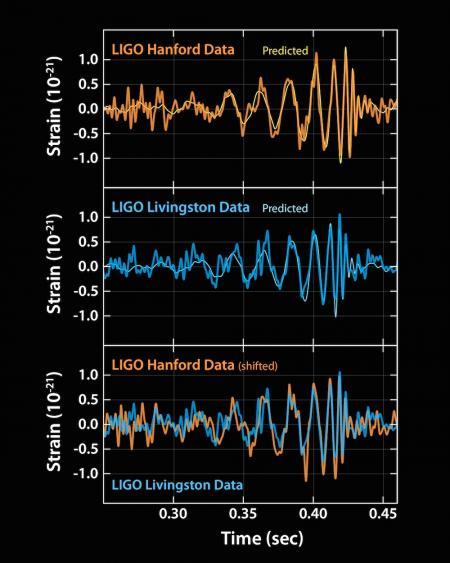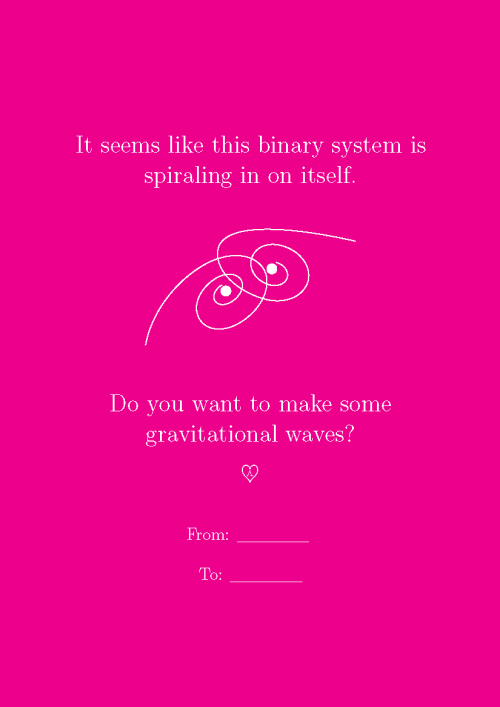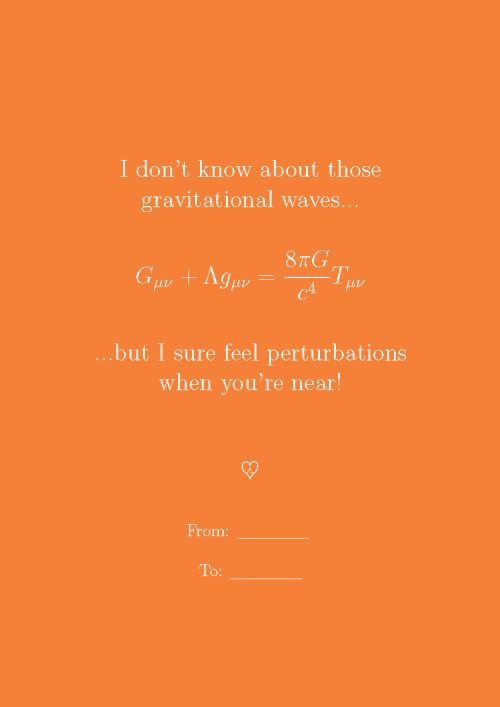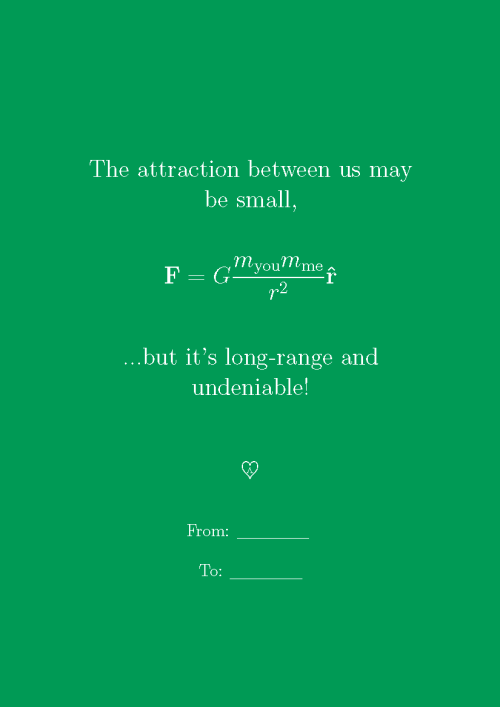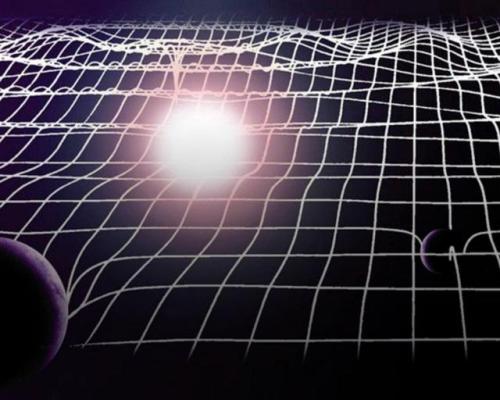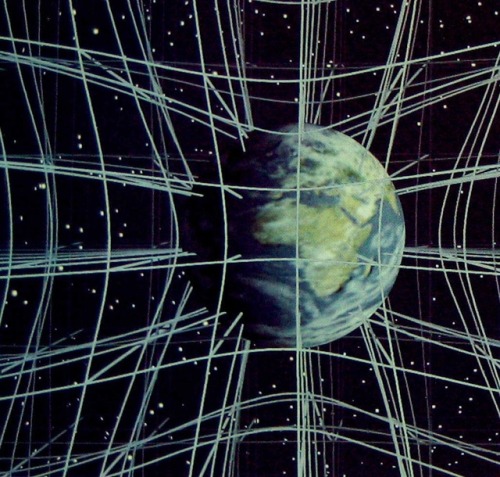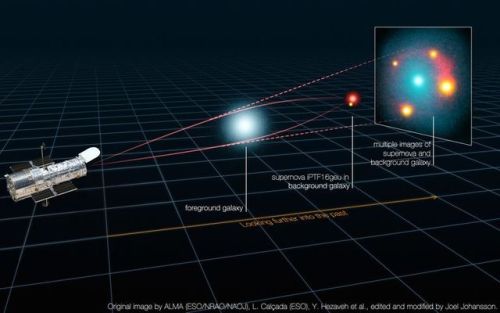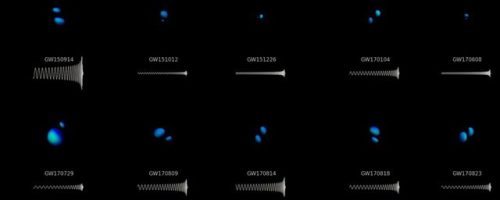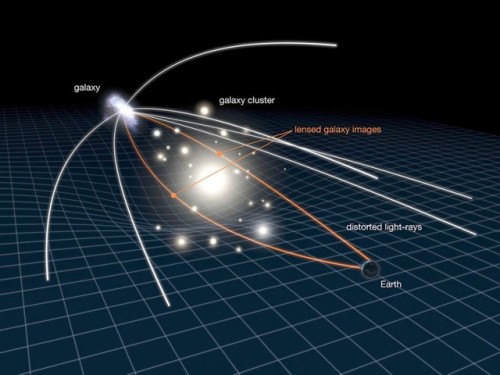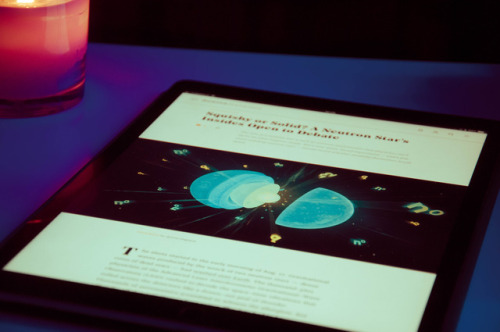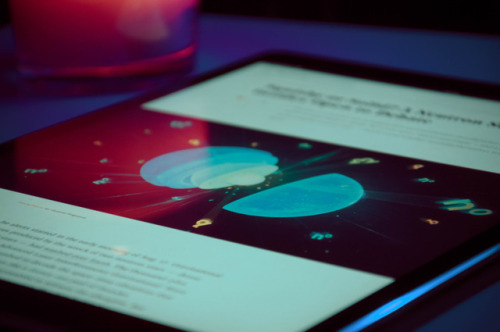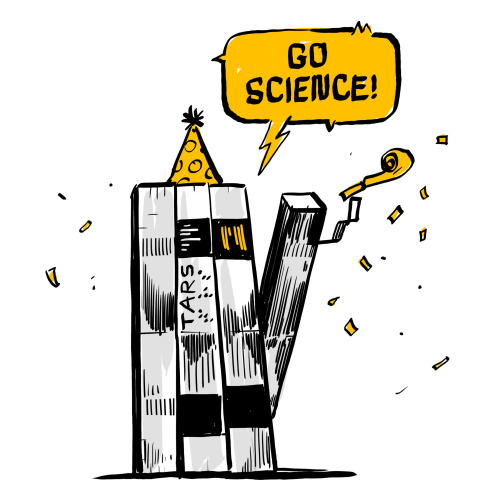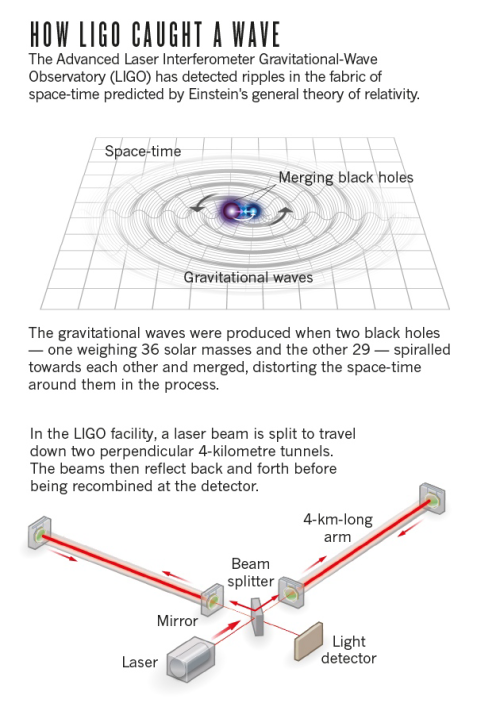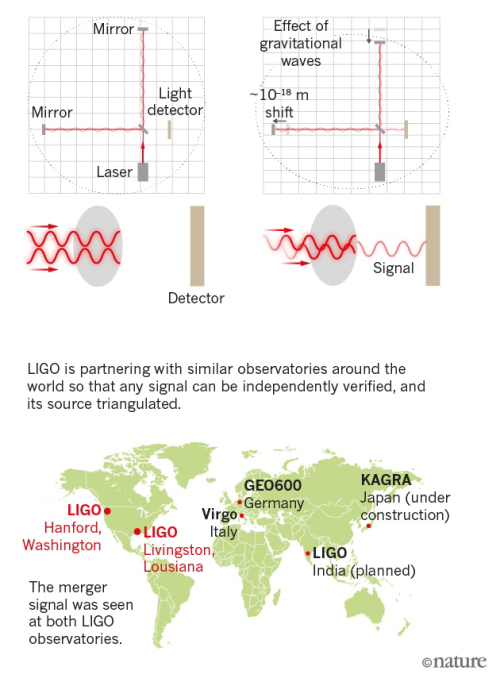#gravitational waves
Ask Ethan: Why Doesn’t Every Galaxy Have A Supermassive Black Hole?
“[You’ve said] that most galaxies have a supermassive black hole at the center. I heard the same statement on television this morning. But why would any galaxy not have a supermassive black hole? Do astronomers know for certain that some galaxies lack a black hole at the center – that there’s a hole (so to speak) where the black hole ought to be?”
Every galaxy, at least at one point, had gas, stars, and had those early stars die. Stellar deaths lead to black holes, and black holes accrete matter, grow, merge, and sink to the centers of galaxies, where they grow further. After billions of years of cosmic history, there should be at least one black hole within each galaxy that’s gotten very large.
Post link
- Galentine’s Day
- Valentine’s Day
- Valentine’s Day cards
- Deadpool movie released
- Evidence of gravitational waves found
The Importance of Gravitational Waves
On the morning of September 14, 2015, the Laser Interferometer Gravitational-Wave Observatory (LIGO), twin detectors located in Louisiana and Washington state, observed signals of ripples in spacetime. Also called gravitational waves, LIGO physicists have concluded that the waves were produced by the merger of two black holes.
By analyzing the signals, it is estimated that the two black holes had a mass 29 and 36 times greater than the Sun and is located 1.3 billion light years away. Based on the small time difference between the two detectors, it was determined that the source is located in the southern hemisphere in the direction of the Magellanic clouds.
100 years ago, Albert Einstein predicted the existence of gravitational waves with his theory of general relativity. In the 1970s and 80s, Joseph Taylor, Jr. and colleagues demonstrated the existence of gravitational waves through the discovery and observation of a pulsar-neutron star binary system.
Gravitational waves are important for studying regions of space that electromagnetic waves cannot reach. Such regions include, but are not limited to, the horizon of a black hole and the early moments of the Universe.
If you missed the announcement, there are press releases from LIGO,NASA,CalTech, and the media. The press conference is available on YouTube. The discovery was accepted for publication in the Physical Review Letters journal and a repository of other papers are available from LIGO. If you enjoy coding, there is an iPython notebook about signal processing with open data from LIGO.
Image: The plots show the signals recieved by each dectector, along with what is predicted by general relativity. The observed signals closely match the predictions. (Credit: LIGO)
Post link
It’s been another year, and you haven’t gotten around to professing your feelings yet. What better way to do it than using last week’s detection of gravitational waves?
Post link
Ask Ethan: Are Gravitational Waves Themselves Affected By Gravity?
“Are gravitational waves themselves subject to gravity? That is, if a gravitational wave were to pass by a galaxy cluster, would its form get distorted (even though the wave, itself, is a distortion of space-time)? One side of me says gravitational waves are a form of energy so therefore must be affected by gravity. The other side of me says “Nah - that just doesn’t make sense!“”
Think about the fabric of space itself. All the masses and forms of energy in the Universe cause space itself to curve, while the curved space itself alters the path along which any matter or form of energy will travel. Massless particles, like photons, are bent by the fabric of space itself. But what about gravitational waves? Are they also subject to this, or does gravitation lack a self-interaction that it would require for this to be possible?
For a very long time, this was a question that was theoretical only. But over the last three years, we’ve observed a slew of gravitational waves, allowing this idea to be tested for the first time.
Post link
Article illustration
Neutron star interior illustration I had a chance to create for Quanta magazine last month.
You can read the article here.
Post link
One hundred years after Albert Einstein predicted the existence of gravitational waves, they have been detected directly.
In a highly anticipated announcement, physicists with LIGO revealed today, on 11 February, that their twin detectors have heard the gravitational ‘ringing’ produced by the collision of two black holes about 1.3 billion light-years from Earth.
This means we now have a new tool for studying the Universe. For example, waves from the Big Bang would tell us a little more about how the universe formed.
read more hereI can’t stop posting
We need a TED talk on this
Image credit: Nik Spencer/Nature
Post link
Lawrence Krauss on “Seeing” the Early Universe
At a 2016 convention hosted by the Committee for Skeptical Inquiry, theoretical physicist Lawrence M. Krauss spoke about scientists’ attempts to look back to when the universe was just fractions of a second old. A few highlights from Krauss’ talk are listed below, and his full presentation can be seen at the bottom of this article.
Post link
Colliding Neutron Stars Could Settle Cosmology’s Biggest Controversy
Newly discovered “standard sirens” provide an independent, clean way to measure how fast the universe is expanding.
To many cosmologists, the best thing about neutron-star mergers is that these events scream into space an otherwise close-kept secret of the universe. Scientists combined the gravitational and electromagnetic signals from the recently detected collision of two of these stars to determine, in a cleaner way than with other approaches, how fast the fabric of the universe is expanding — a much-contested number called the Hubble constant.
In the days since the neutron-star collision was announced, Hubble experts have been surprised to find themselves discussing not whether events like it could settle the controversy, but how soon they might do so.
Scientists have hotly debated the cosmic expansion rate ever since 1929, when the American astronomer Edwin Hubble first established that the universe is expanding — and that it therefore had a beginning. How fast it expands reflects what’s in it (since matter, dark energy and radiation push and pull in different ways) and how old it is, making the value of the Hubble constant crucial for understanding the rest of cosmology.
And yet the two most precise ways of measuring it result in different answers, with a curious 8 percent discrepancy that “is currently the biggest tension in cosmology,” said Dan Scolnic of the University of Chicago’s Kavli Institute for Cosmological Physics. The mismatch could be a clue that cosmologists aren’t taking into account important details that have affected the universe’s evolution. But to see if that’s the case, they need an independent check on the measurements.
Neutron-star collisions — newly detectable by the Laser Interferometer Gravitational-Wave Observatory (LIGO) and Virgo detectors — seem to be just the thing.
“This first [collision] gives us a seat at the cosmology table,” Daniel Holz, an astrophysicist with the University of Chicago and LIGO who was centrally involved in the new Hubble measurement, said in an email. “And as we get more, we can expect to play a major role in the field.”

In an expanding universe, the farther away an astronomical object is, the faster it recedes. The Hubble constant says how much faster. Edwin Hubble himself estimated that galaxies move away from us 500 kilometers per second faster for each additional megaparsec of distance between us and them (a megaparsec is about 3.3 million light-years). This was a gross overestimate; by the 1970s, astrophysicists favored values for the Hubble constant around either 50 or 100 kilometers per second per megaparsec, depending on their methods. As errors were eliminated, these camps met near the middle. However, in the past year and a half, the Hubble trouble has reheated. This time, 67 stands off against 73.
The higher estimate of 73 comes from observing lots of astronomical objects and estimating both distance and velocity for each one. It’s relatively easy to see how fast a star or galaxy is receding by looking at its “redshift” — a reddening in color that happens for the same reason the sound of a receding ambulance’s siren drops in pitch. Correct for an object’s “peculiar velocity,” caused by the gravitational pull of other objects in its neighborhood, and you’re left with its recessional velocity due to cosmic expansion.
Historically, however, it has proven much, much harder to measure the distance to an object — the other data point needed to calculate the Hubble constant.
To gauge how far away things are, astronomers build up rungs on a “cosmic distance ladder” in which each rung calibrates more-distant rungs. They start by deducing the distances to stars in the Milky Way using parallax — the stars’ apparent motion across the sky over the course of the year. With this information, astronomers can deduce the brightness of so-called Cepheid stars, which can be used as so-called “standard candles” because they all shine with a known intrinsic brightness. They then spot these Cepheid stars in nearby galaxies and use them to calculate how far away the galaxies must be. Next, the Cepheids are used to calibrate the distances to Type Ia supernovas — even brighter (though rarer) standard candles that can be seen in faraway galaxies.
Each jump from one rung to the next risks miscalculation. And yet, in 2016, a team known as SH0ES used the cosmic distance ladder approach to peg the Hubble constant at 73.2 with an accuracy of 2.4 percent.
However, in a paper published the same year, a team used the Planck telescope’s observations of the early universe to obtain a value of 67.8 for the current expansion rate — supposedly with 1 percent accuracy.
The Planck team started from the faint drizzle of ancient light called the cosmic microwave background (CMB), which reveals the universe as it looked at a critical moment 380,000 years after the Big Bang. The CMB snapshot depicts a simple, nearly smooth, plasma-filled young universe. Pressure waves of all different wavelengths rippled through the plasma, squeezing and stretching it and creating subtle density variations on different length scales.
At the moment recorded in the CMB, pressure waves with particular wavelengths would have undergone just the right fraction of an undulation since the Big Bang to all reach zero amplitude, momentarily disappearing and creating smooth plasma densities at their associated length scale. Meanwhile, pressure waves with other wavelengths undulated just the right amount to exactly peak in amplitude at the critical moment, stretching and squeezing the plasma to the full extent possible and creating maximum density variations at their associated scales.
These peaks and troughs in density variations at different scales, which can be picked up by telescopes like Planck and plotted as the “CMB power spectrum,” encode virtually everything about the young universe. The Hubble constant, in particular, can be reconstructed by measuring the distances between the peaks. “It’s a geometric effect,” explained Leo Stein, a theoretical physicist at the California Institute of Technology: The more the universe has expanded, the more the light from the CMB has curved through expanding space-time, and the closer together the peaks ought to appear to us.

Other properties of nature also affect how the peaks end up looking, such as the behavior of the invisible “dark energy” that infuses the fabric of the cosmos. The Planck scientists therefore had to make assumptions about all the other cosmological parameters in order to arrive at their estimate of 67 for the Hubble constant.
The similarity of the two Hubble measurements “is amazing” considering the vastly different approaches used to determine them, said Wendy Freedman, an astrophysicist at the University of Chicago and a pioneer of the cosmic distance ladder approach. And yet their margins of error don’t overlap. “The universe looks like it’s expanding about eight percent faster than you would have expected based on how it looked in its youth and how we expect it to evolve,” Adam Riess of Johns Hopkins University, who led the SH0ES team, told Scientific American last year. “We have to take this pretty darn seriously.”
The 67-versus-73 discrepancy could come down to an unknown error on one side or both. Or it might be real and significant — an indication that the Planck team’s extrapolation from the early universe to the present is missing a cosmic ingredient, one that changed the course of history and led to a faster expansion rate than otherwise expected. If a hypothesized fourth type of neutrino populated the infant universe, for instance, this would have increased the radiation pressure and affected the CMB peak widths. Or dark energy, whose repulsive pressure accelerates the universe’s expansion, might be getting denser over time.
Suddenly, neutron-star collisions have materialized to cast the deciding vote.
The crashing stars serve as “standard sirens,” as Holz and Scott Hughes of the Massachusetts Institute of Technology dubbed them in a 2005 paper, building on the work of Bernard Schutz 20 years earlier. They send rushes of ripples outward through space-time that are not dimmed by gas or dust. Because of this, the gravitational waves transmit a clean record of the strength of the collision, which allows scientists to “directly infer the distance to the source,” Holz explained. “There is no distance ladder, and no poorly understood astronomical calibrations. You listen to how loud the [collision] is, and how the sound changes with time, and you directly infer how far away it is.” Because astronomers can also detect electromagnetic light from neutron-star collisions, they can use redshift to determine how fast the merged stars are receding. Recessional velocity divided by distance gives the Hubble constant.
From the first neutron-star collision alone, Holz and hundreds of coauthors calculated the Hubble constant to be 70 kilometers per second per megaparsec, give or take 10. (The major source of uncertainty is the unknown angular orientation of the merging neutron stars relative to the LIGO detectors, which affects the measured amplitude of the signal.) Holz said, “I think it’s just pure luck that we’re smack in the middle,” between the cosmic-distance-ladder and cosmic-microwave-background Hubble estimates. “We could easily shift to one side or the other.”
The measurement’s accuracy will steadily improve as more standard sirens are heard over the next few years, especially as LIGO continues to ramp up in sensitivity. According to Holz, “With roughly 10 more events like this one, we’ll get to 1 percent [of error],” though he stresses that this is a preliminary and debatable estimate. Riess thinks it will take more like 30 standard sirens to reach that level. It all depends on how lucky LIGO and Virgo got with their first detection. “I do think the method has the potential to be a game changer,” said Freedman. “How fast this will occur [or] what the rate of these objects will be … we don’t yet know.”
Scolnic, who was part of SH0ES, said his team’s tension with Planck’s measurement is so large that “the standard siren approach doesn’t need to get to 1 percent to be interesting.”
As more standard sirens resound, they’ll gradually home in on the Hubble constant once and for all and determine whether or not the expansion rate agrees with expectations based on the young universe. Holz, for one, is exhilarated. “I’ve dedicated the last decade of my life in the hopes of making one plot: a standard siren measurement of the Hubble. I got to make my Hubble plot, and it is beautiful.”
Post link

![Ask Ethan: Why Doesn’t Every Galaxy Have A Supermassive Black Hole?“[You’ve said] that most galax Ask Ethan: Why Doesn’t Every Galaxy Have A Supermassive Black Hole?“[You’ve said] that most galax](https://64.media.tumblr.com/3dd002196a9062c9d914620037962d5b/c6106bf538531d92-19/s500x750/daabd24a7c654bdf855fd9c39377b9a23f6a90f0.jpg)
![Ask Ethan: Why Doesn’t Every Galaxy Have A Supermassive Black Hole?“[You’ve said] that most galax Ask Ethan: Why Doesn’t Every Galaxy Have A Supermassive Black Hole?“[You’ve said] that most galax](https://64.media.tumblr.com/67b0047804b302f936c87b89f572a73a/c6106bf538531d92-53/s500x750/f5c9545ff84ab43f77167122d4a2f210cb0fc05c.jpg)
![Ask Ethan: Why Doesn’t Every Galaxy Have A Supermassive Black Hole?“[You’ve said] that most galax Ask Ethan: Why Doesn’t Every Galaxy Have A Supermassive Black Hole?“[You’ve said] that most galax](https://64.media.tumblr.com/4f378a54ea167a9473663c7ee60be61c/c6106bf538531d92-c6/s500x750/4a5947c758341f5e33bd2ad1b1ccf7a2572a4579.jpg)
![Ask Ethan: Why Doesn’t Every Galaxy Have A Supermassive Black Hole?“[You’ve said] that most galax Ask Ethan: Why Doesn’t Every Galaxy Have A Supermassive Black Hole?“[You’ve said] that most galax](https://64.media.tumblr.com/ca7ad96bbc4f2e382809347b754d97f9/c6106bf538531d92-84/s500x750/132d33d0cda14b4d26478a9e52888b60550ac728.jpg)
![Ask Ethan: Why Doesn’t Every Galaxy Have A Supermassive Black Hole?“[You’ve said] that most galax Ask Ethan: Why Doesn’t Every Galaxy Have A Supermassive Black Hole?“[You’ve said] that most galax](https://64.media.tumblr.com/254493eb6b680349ef0eaf4a8c911c0a/c6106bf538531d92-db/s500x750/f6d9ca8d556029b9c918559f5301f16358a558d4.jpg)
![Ask Ethan: Why Doesn’t Every Galaxy Have A Supermassive Black Hole?“[You’ve said] that most galax Ask Ethan: Why Doesn’t Every Galaxy Have A Supermassive Black Hole?“[You’ve said] that most galax](https://64.media.tumblr.com/bf47f0d398b7f893c2ab6edffc05e813/c6106bf538531d92-82/s500x750/8426f673e87a3b7c38e5c30a2cb7bcad418bc002.jpg)
![Ask Ethan: Why Doesn’t Every Galaxy Have A Supermassive Black Hole?“[You’ve said] that most galax Ask Ethan: Why Doesn’t Every Galaxy Have A Supermassive Black Hole?“[You’ve said] that most galax](https://64.media.tumblr.com/25cb7cc2d3ed0d2582c42c48d6474359/c6106bf538531d92-22/s500x750/2b2b3a440b43b4823044bc59fa50c165eae22362.jpg)
![Ask Ethan: Why Doesn’t Every Galaxy Have A Supermassive Black Hole?“[You’ve said] that most galax Ask Ethan: Why Doesn’t Every Galaxy Have A Supermassive Black Hole?“[You’ve said] that most galax](https://64.media.tumblr.com/108d42a9a9e45ff839dc7aa8cad42470/c6106bf538531d92-c3/s500x750/8031b5699fcbc3cf34ac7b180e8e948d3f06c3c2.png)
![Ask Ethan: Why Doesn’t Every Galaxy Have A Supermassive Black Hole?“[You’ve said] that most galax Ask Ethan: Why Doesn’t Every Galaxy Have A Supermassive Black Hole?“[You’ve said] that most galax](https://64.media.tumblr.com/fe937d752b7fd7c9e88f7df8875b061b/c6106bf538531d92-0f/s500x750/157675523c2afac78667cce103dd7b336ab3f2e7.png)
![Ask Ethan: Why Doesn’t Every Galaxy Have A Supermassive Black Hole?“[You’ve said] that most galax Ask Ethan: Why Doesn’t Every Galaxy Have A Supermassive Black Hole?“[You’ve said] that most galax](https://64.media.tumblr.com/3d3b68b0a820d4f54cd80332ef70ebf2/c6106bf538531d92-e7/s500x750/56e317ed0a984932aad5cbee3a6214f3aaf10360.jpg)
